About Doug
Doug Purdon was born in Toronto, Ontario. He is a full-time painter, teacher and writer. He is a graduate of the Ontario College of Art and an elected member of the Society of Canadian Artists and Ontario Society of Artists. He currently lives in Toronto with his wife, the writer Rosemary Aubert.
He exhibits his work in galleries in Canada, the US and the UK and his paintings are in many private and corporate collections, including The Toronto Public Library, The City of Toronto, The Arts and Letters Club of Toronto, Sears Canada, and The Mystic Seaport Museum, Mystic CT, where his painting Tugboat Alley was awarded the Museum Purchase Award in 2005. A major retrospective of his work was held in October 2007 at the Arts and Letters Club of Toronto.
Doug believes that artists should continue the tradition of passing on their skills and knowledge to other artists and does this through his workshops, seminars and writing. He currently teaches courses at Loyalist College, Belleville, Ontario; Bridgewater Retreat, Tweed, Ontario; and the School of Continuing Studies, University of Toronto and in workshops for art associations across Canada.
While he paints his native Ontario, he also enjoys travelling to different locations and has painted in Scotland, England, France, and the American Southwest and on the eastern and western seaboard of North America. He is represented by Studio 737, Tweed, Ontario; Arnold Fine Art, Newport RI; and the Gallery at Mystic Seaport, Mystic CT.
For the past eleven years Doug has been the Educational Advisor for Winsor & Newton in Canada. In that capacity he visits colleges and universities demonstrating the working properties of artist’s materials, their correct use and safe working practices. Winsor & Newton has arranged for him to visit major art museums including The Tate, National Gallery of Art Washington and to meet with curators and conservators to discuss the technical and historical aspects of painting and materials. He incorporates the knowledge of painting techniques and proper working practices that he has learned from these visits into his teaching programs.
To learn more about Doug and view more of his work, please visit his website by following the link below:
https://www.dougpurdon-artist.com/
Painting a Detailed Painting in Watercolor and Gouache
When painting complex subjects in watercolour, it is often hard to avoid losing some of the highlights and the details. While masking fluid can be used to cover areas that are to remain white, it is hard to remember to cover areas of colour that will become highlights within the darks. I also find masking fluid tends to create hard edges and can often damage the surface of the paper when it is left on for extended periods of time. In this article I will show you how I tackled a very complex subject using watercolour and gouache.
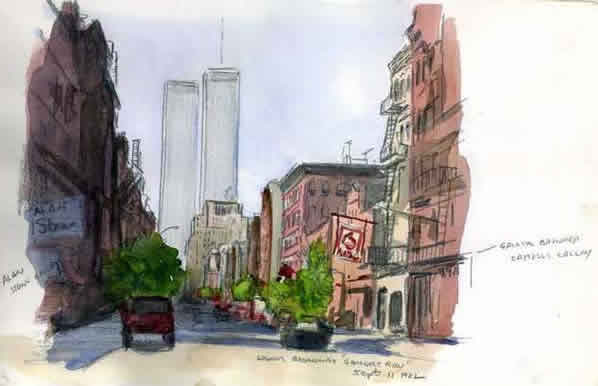
Painting from sketchbook – Lower Broadway – New
York 1982
When travelling, I always carry a sketch book and make studies of scenes that interest me and that I feel could be done as a painting when I return to the studio. I take photos as reference for details, especially when the subject is as complex as this one. When I returned from New York City in 1982, I had every intention of starting work on this painting, but I put the sketch book to one side and got busy with other paintings and the painting was never completed. In 2001 after the events of September 11, I remembered the little sketch I had done of New York and the World Trade Center in happier times. I decided to complete the process that had started on that September morning in 1982. Looking at the sketch, I found the picture needed more information on the right hand side so I knew I could move the twin towers from the centre of the painting for better composition. I also added an additional building. Luckily I had a reference photo of it on file.
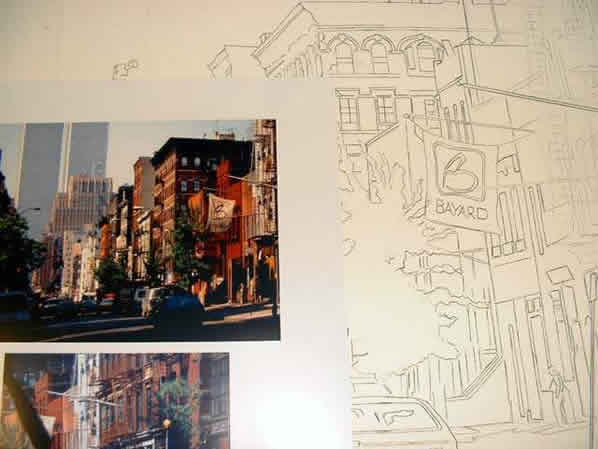
Using the sketch and reference photos, I drew the image lightly on 300 lb. Winsor & Newton watercolour paper using a 2H pencil. When I was satisfied with the drawing, I went over the pencil with diluted India ink. Once the ink was dry I removed the pencil with a kneaded eraser. When painting a detailed image in watercolour, I use this method instead of graphite pencil alone as the ink will not smudge or mix into the washes as they are applied.
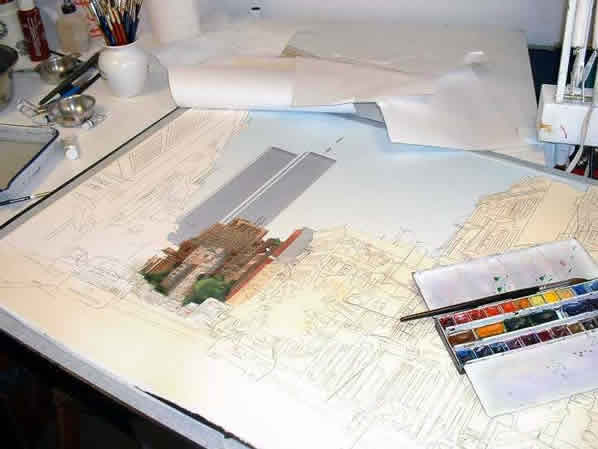
I applied a pale warm yellow wash to the paper the colour of the early morning light. Sunlight is seldom pure white, and as it is the prime source of illumination, its colour will effect all other colours in the painting. I use both pan and tube watercolours in my paintings, the pans being reserved for small amounts of colour and the tube colours used when I require a larger amount for washes. Once a large flat area such as the sky is complete, I cover it with paper to protect it from spatters or finger marks.
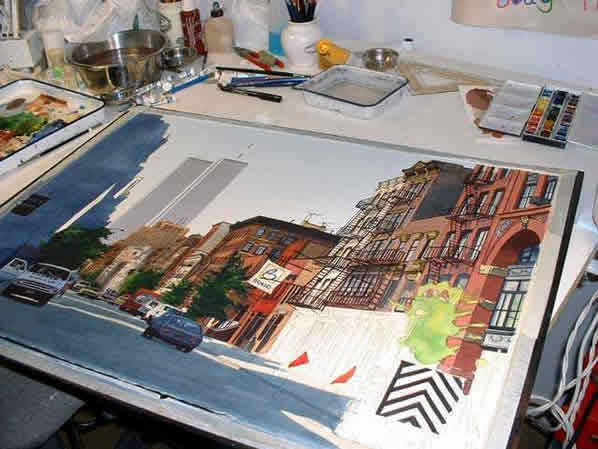
Flat washes were applied establishing local colour and then details were added. In this picture you can see the preliminary, intermediate and completed painting. On the drawing board is the butcher’s tray and various dishes I use to mix washes. Some of the best mixing dishes for watercolour are not to be found in the art store but in a kitchen utensils shop. Stainless steel is ideal for mixing colours as it won’t react with pigments, will not rust and is easy to clean and unbreakable.
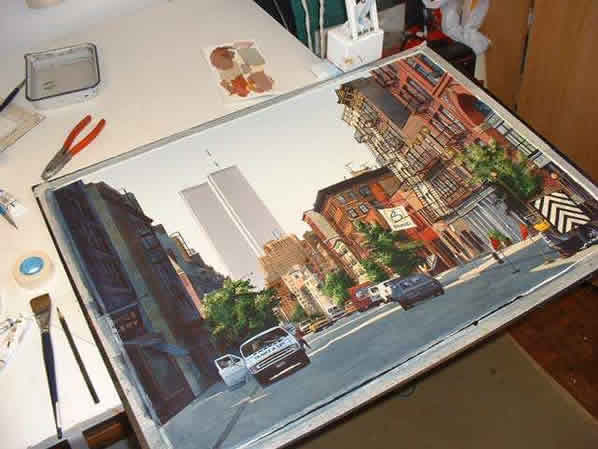
I have now finished painting with transparent watercolour and am adding details, lights and cleaning up rough edges with gouache. The amount of gouache that I use depends on the individual painting and can range from a few details to a complete repainting of areas. I also darkened some areas more to increase the contrast, signed the painting and it was finished.
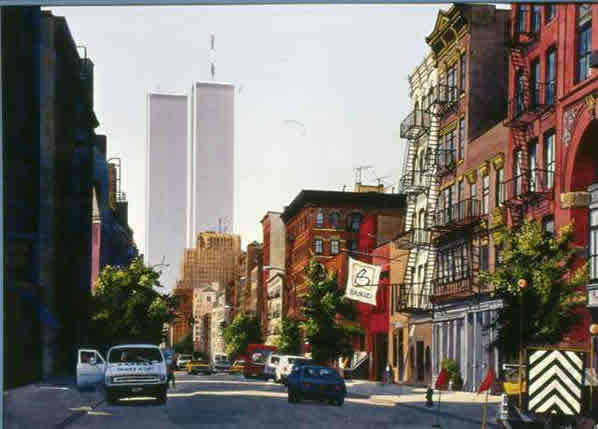
All content and images in this painting demonstration are copyright of Doug Purdon and may not be copied, reprinted, published, reengineered, translated, hosted, or otherwise distributed by any means without explicit permission of Doug Purdon.
To learn more about Doug and view more of his work, please visit his website by following the link below:
Leave a Reply